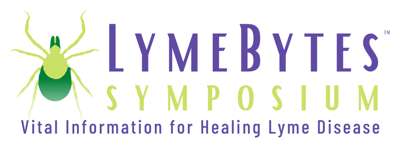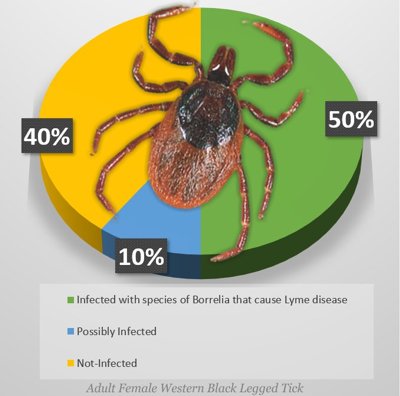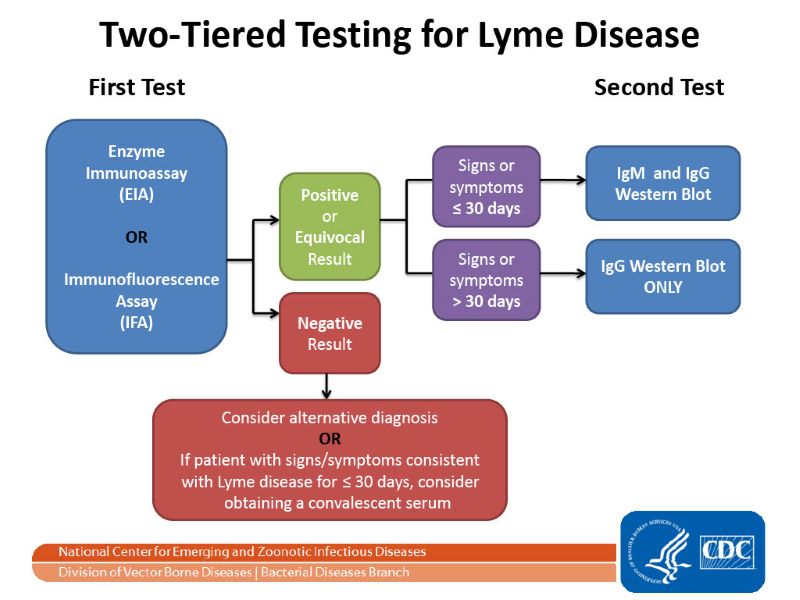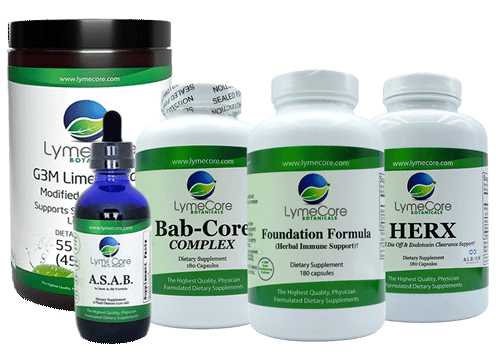The Science Of How To Treat Lyme Disease Naturally In 2024

Join us for our 3rd Annual Lyme Disease Conference!
October 25th & 26th 2024
The Hilton Mystic | Mystic, Connecticut
Jump To Article Highlights
-
Best Herbs for Healing lyme disease
-
Natural lyme disease treatment
-
Sample Herbal Protocol For Lyme Disease
-
Natural Lyme Prevention
-
How Chronic Inflammation affects Lyme
-
What to do if you are bitten by a tick
-
Lyme testing accuracy and why it's controversial
-
Summary: Healing Lyme Disease Naturally
-
Lyme Disease Telehealth Treatment
-
About The Author, Dr. Hinchey
Why is Natural Lyme Disease Treatment So Important?
A New Study Shows Nearly 15% of the World's Population Has Likely Had Lyme Disease.
Also, according to the Centers for Disease Control (CDC), Lyme disease is one of the most rapidly emerging infectious diseases in North America and Europe.
On the East coast, 50-60% of western black legged ticks are infected with species of Borrelia that cause Lyme disease.

Named after a small Connecticut town, Lyme disease is transmitted to humans by the bite of ticks infected with the bacterial spirochete Borrelia burgdorferi. To make matters worse, there are several other species of Borrelia that cause Lyme disease and tick borne relapsing fever.
Initial signs and symptoms when first infected are very similar to that of the flu, leaving many cases undetected.
When initially infected, typical signs and symptoms—including fever, body aches, fatigue, headaches, nausea, and Erythema migrans (bullseye rash)—are very similar to that of the flu and can often be dismissed as such, leading to undetected infection.
If left untreated or improperly treated, Lyme disease can spread to the heart, joints, and nervous system, causing symptoms ranging from stiff neck, swollen joints, and muscle pain to heart palpitations, headaches, psychiatric symptoms (anxiety, depression, and aggression), irritable bladder, cognitive decline, insomnia, and night sweats.
Being Aware Is Crucial To Preventing Lyme disease.
Several factors must be taken into consideration to prevent Lyme disease:
- Knowing where you are most likely to pick up ticks
- How to keep your lawn and pets free of ticks
- Preventing a bite if a tick hitches a ride on you or your children
- Identifying the ticks that put you at most risk
- Removing the tick promptly and properly
- Knowing the symptoms of an infection
- Recognizing the flaws in testing and the rate of misdiagnosis.
That's a lot of information to digest! Still, being aware of all of these factors is crucial in protecting your family.
Lyme Prevention Basics
The first step in preventing Lyme disease is something many of us learn as we begin to explore the great outdoors–avoid tick bites.
When out in grassy areas, leaves, or woods, wear long sleeved and light colored clothing, and pull your socks over your pants.
But Did you know that you don’t have to go into the woods to get ticks?
Most ticks are found within the inner three yards of your tree line. Stone walls make perfect mice hotels, trees provide shade, and leaves provide warmth for mice and other rodents, who serve as hosts for ticks. A staggering eighty-six percent of ticks are found within this perimeter of your lawn, but leaf removal, cleaning out stone walls, and increasing sunlight past the perimeter of the lawn will decrease ticks on your property by ninety percent.
Take additional precautions by setting up your children’s swing set or play area away from the tree line in order to reduce their exposure to the area of highest tick concentration.
Natural Yard Sprays To Protect Your Home
You can also utilize natural sprays that are safe for honeybees and amphibians, as well as humans and pets, which can keep ticks at bay.
Spraying for ticks should be done in the early spring, summer, and late fall, and should be applied to the entire lawn, well past the perimeter and into the woods. Consider recycling paper towel tubes into tick tubes that help to eliminate ticks from rodents like the white footed mouse which is the main spreader of tiny nymph ticks.
Natural Tick Repellants To Protect Your Family
There are many natural tick sprays that do not use DEET but contain essential oil of chrysanthemum or cedar, which is effective in repelling ticks and other insects.
Insect Shield is a company that treats special clothing/gear for outside activities (hunting, fishing, rock climbing, hiking) with tick repellant and lasts seventy washes. Regardless of precautions taken, it is important to perform tick checks on yourselves, children, and pets after being outside. Pay special attention to the hair line, arm pits, belly button, back of knees, and groin.
Recognizing the types of ticks that carry Lyme disease and co-infections is also crucial.
Most people are aware that a deer tick ranges in size from a sesame seed to that of a poppy seed, while a dog tick is much larger.
What most people do not know is that a fully engorged deer tick is the same size of a fully engorged dog tick!
Nymph ticks are harder to spot, as they are much smaller than an adult deer tick, are a translucent/pale color, and are as small as the period at the end of this sentence. It is very common to not realize that you have been bitten by a tick, and to never find the tick that transmitted Lyme disease to you. These ticks are usually hidden well enough to become fully engorged and drop off without your awareness, which is how most people contract Lyme and other co-infections.
"...less than half of people diagnosed with Lyme have a history of a known tick bite or bullseye rash."
Remember, you do not need to have found a tick on your body or to have developed Erythema migrans to be diagnosed with Lyme disease. In fact, less than half of people diagnosed with Lyme have a history of a known tick bite or bullseye rash. If you do develop any of these symptoms, talk with your doctor about proper testing, or find a Lyme literate practitioner who knows how to diagnose and treat appropriately.
"It is important to know that the lifestyle and nutritional imbalances we experience as a society create chronic, systemic, low-grade inflammation that make it harder for us to overcome infection as well (Ruiz-Nunez, 2013). As a naturopathic physician, I believe that this is where we as individuals can make the greatest difference in the fight against Lyme and tick-borne disease."
~ Dr. Myriah Hinchey
When we think about why Lyme disease so easily takes over the human body, we see that inflammation plays a huge role.
If the body is constantly “putting out fires” from everyday exposure to events or substances that cause inflammation (such as stress, sugar, environmental allergens, food sensitivities, chemicals, nutrient deficiencies, vitamin D3 deficiency, etc.), it has a much harder time when a real threat enters the body.
We have to focus on creating a foundation for health, which is simple but sometimes hard to implement in modern life. Rather than subscribing to a particular diet or detox to achieve this goal, I instead recommend returning to the basics. Eat food in its original unprocessed form. Limit sugar and alcohol intake. Drink fresh, filtered water as often as possible. Move your body. Create a healthy sleep schedule and take time during your day for short mental health breaks. Prioritize stress-relieving activities that bring you joy and peace. If it is too overwhelming to implement all these at once, work on one aspect of health at a time, and build upon that. It’s never too late to start improving your body’s resilience.
Taking a Bite out of Lyme.
What To Do If You Are Bitten By A Tick?
Do not panic, as there is plenty that both conventional and naturopathic medicine can do acutely to prevent infection from taking hold and causing illness. First things first, however, you must remove the tick safely.
Do not use anything to “suffocate” the tick, as this may cause the tick to regurgitate its contents into you and expose your body to Borrelia burgdorferi and other species of Borrelia that cause Lyme disease, as well as its co-infections. Use flat-tipped tweezers to grasp the tick at the base of the head (not the body) and slowly but firmly pull the tick from the skin in the same direction that it is implanted.
Once the tick is removed, use a clear plastic sealable bag to store it. Apply hydrogen peroxide to clean the wound. Mix bentonite clay and Andrographis tincture (an anti-spirochetal herb) to form a paste and apply it directly to the bite. Cover with a bandage soaked in the Andrographis tincture and let it heal.
[SOLVED] What To Do After A Tick Bite, While You Wait For Your Test Results To Come Back.
Once the tick is removed, use a clear plastic sealable bag to store it. Apply hydrogen peroxide to clean the wound. Mix bentonite clay and Andrographis tincture (an anti-spirochetal herb) to form a paste and apply it directly to the bite. Cover with a bandage soaked in the Andrographis tincture and let it heal.
Dr. Hinchey recommends taking her custom herbal formula ASAB™ for an immune system boost while you wait for your tick results.
8 herbs in ASAB™ (As Soon As Bit by a tick) Formula that go beyond just killing the bacteria at every phase by inhibiting the pathophysiological process that helped the infection grow and thrive. ‡
For a deep dive into the science of how ASAB™ inhibits the pahophysiology of Lyme disease watch Dr. Hinchey's 30 min LymeCore Presentation.
The International Lyme and Associated Diseases Society (ILADS) recommends that those experiencing Erythema migrans (bullseye-rash) undergo antibiotic therapy for four to six weeks.
For those without access to antibiotics or aversion to pharmaceutical use, herbal antimicrobials taken internally can be used effectively to address the suspected infection, either instead of prescriptions or in addition to them.
A recent study looked at several antimicrobial and antiparasitic herbs as compared to the controls of prescription doxycycline and cefuroxime (Feng, 2020). The botanicals with “good” to “strong” activity against Borrelia included Cryptolepis sanguinolenta, Juglans nigra (Black walnut), Polygonum cuspidatum (Japanese knotweed), Artemisia annua (Sweet wormwood), Uncaria tomentosa (Cat's claw), Cistus incanus, and Scutellaria baicalensis (Chinese skullcap).
In fact, Cryptolepis sanguinolenta extract caused complete eradication of the spirochete, while doxycycline and cefuroxime could not fully eradicate B. burgdorferi. This research makes a powerful case for using herbal antibiotics in addition to or instead of pharmaceuticals. (Feng, 2020)
You may also consider taking homeopathic Ledum and Apis, two remedies excellent at addressing puncture wounds and insect bites and stings. Dr. Alexis Chesney, a Lyme literate Naturopathic physician, put together a very helpful Tick Preparedness Kit that contains herbs, homeopathics, and items for tick removal and storage.
Test Your Ticks–and Yourself
I recommend sending the tick for testing so that your practitioners can help you create a treatment plan tailored to the specific pathogens that are found in the tick.
Although there are inexpensive and even free resources for tick testing, I have found the most comprehensive way to test ticks is using the expanded panel through www.tickreport.com. The results typically come back within 48-72 hours, which allows for timely and proper antibiotic treatment.
Ticks can carry parasites and viruses as well!
A study published in 2020 found that Ixodes scapularis, or blacklegged deer ticks, are the most common ticks in Connecticut. These ticks carry multiple bacteria that can cause Lyme disease, and several others that cause co-infections like Anaplasma phagocytophilum, Babesia microti, Bartonella henselae, and Borrelia miyamotoi (Pokutnaya, 2020).
This means that a tick bite puts you at risk for a multitude of diseases, so it is essential that the tick testing you choose is comprehensive. It is best to know what infections the tick itself carried and choose the appropriate antibiotics or antiparasitics (prescription or herbal) that can treat them.
The Controversy of Lyme Diagnosis
Diagnosis of Lyme disease is surprisingly controversial. Testing for Lyme and co-infections is complicated, and in acute cases, it can lead to false negative results that cause misdiagnosis and allow the disease to become chronic.
Standard testing involves a two tiered test: first, an ELISA is used to detect antibodies and if it is found positive, a Western Blot is performed to confirm the initial diagnosis. The problem with this testing technique is that the ELISA is not a sensitive test, especially during the first few months of infection.
The 2 Tiered Testing for Lyme Disease is positive in less than 30-60% of patients infected with Lyme disease.

The MarDX Western Blot (which tests for ONLY Borrelia burgdorferi species and is used by most standard laboratories) is much more sensitive than the ELISA and detects Borrelia burgdorferi more often, but can still give a false negative more than 30% of the time.
In addition to issues with test sensitivity, there is the matter of timing. It can take weeks for IgM to become positive and over a month for IgG to show a Lyme infection, so testing too soon after a tick bite may not be accurate (CDC, 2021).
If a patient is not mounting a strong immunological response to Lyme, it is hard to detect antibodies in the patient’s blood, which is what ELISA and Western Blot testing investigate. Performing a urine PCR, which looks for DNA of Borrelia burgdorferi, is more accurate.
To complicate matters further, if you are only looking at Borrelia burgdorferi, you will miss the presence of other species of Borrelia that cause Lyme disease and Tick-Borne Relapsing Fever (TBRF).
Antibody and PCR testing does not test for co-infections, so you may receive a false negative, despite clinically showing signs of infection. For these reasons, it is important to be tested for all of the common co-infections of Lyme disease, including Babesia, Mycoplasma, Bartonella, Anaplasma, and Ehrlichia, none of which are detected by any Lyme test.
Once again, being proactive and treating comprehensively is the best approach.
Specialized laboratories likeVibrant Wellness can be used for proper testing of all tick-borne diseases.
How Lyme Hides & Where It Feeds In The Body
Before we dive into natural interventions that are useful to treat and heal Lyme disease, it is extremely important to understand how Lyme develops.
In a fascinating study published in 2019, researchers in Amsterdam found that tick saliva is not only the medium through which the pathogenic bacteria enter their hosts, it also contains a mixture of proteins that disarm the body’s immune system. This protects Borrelia from any natural defenses that you would normally mount to the infection (Nuttall, 2019).
We have also learned that once a tick bites, the saliva further decreases normal immune function by slowing blood coagulation and other aspects of wound healing.
This way, the tick can continue to feed for a longer period, while also transmitting higher loads of Borrelia in the process (Pham, 2021). Together, the tick saliva and Borrelia further manipulate the biochemistry of the body to degrade connective tissue.
Collagen is rich in nutrients that nourish Borrelia, so the bacteria tends to migrate to areas high in collagen–like joints– in order to feed themselves and reproduce (Zambrano, 2004).
This ultimately makes the collagen-dense connective tissue in the body an ideal place to host bacteria and let Lyme disease thrive.
An Unusually Natural Way of Healing Lyme.
A recent study (Feng, 2020) shows that some of the best herbs for Lyme Disease are my most used anti-microbials.
The information provided in this article is for educational and informational purposes only and is not intended as medical advice. It is not a substitute for professional medical advice, diagnosis, or treatment. Always seek the advice of your physician or other qualified healthcare provider with any questions you may have regarding a medical condition or treatment and before undertaking a new health care regimen, and never disregard professional medical advice or delay in seeking it because of something you have read in this article.
Download the monographs with Dr. Hinchey's Natural Lyme & Babesia Treatment Presentation (55:38 min) on her LymeBytes™ App ➡
Sample Lyme Disease Herbal Protocol
-
-
- Modified Citrus Pectin (MCP): 1 tsp TID
Modified Citrus Pectin (MCP) supports all 5 of Dr. Hinchey's Natural Lyme Treatment goals and that's why she puts almost all of her Lyme patients on MCP ..Learn More➡ - Ashwagandha (Withania somnifera): ½ tsp TID
- Japanese Knotweed (Polygonum cuspidatum root): ¼ tsp TID
- Cat's Claw (Uncaria tomentosa): ¼ tsp TID
- Cryptolepis (Cryptolepis sanguinolenta): ½ tsp TID
- SkullcapSkullcap (Scutellaria baicalensis): ¼- ½ tsp TID
- Sweet Annie (Artemisia annua): ¼ tsp TID
- Black Walnut (Juglans nigra): ¼ tsp TID
- Grapefruit Seed Extract (GFSE): 600-1200 mg BID
- Modified Citrus Pectin (MCP): 1 tsp TID
-
(consider others depending on individual symptoms)
-
Japanese knotweed (Polygonum cuspidatum root)
Polygonum cuspidatum root, also known as Japanese knotweed or Hu Zhang in traditional Chinese medicine, is a perennial herb that is native to Asia. The root of the plant is used in traditional Chinese and Japanese medicine for a variety of purposes, including to promote cardiovascular health, improve circulation, and reduce inflammation. Some studies suggest that compounds in the root may have antioxidant and anti-inflammatory properties and may also be useful in the treatment of cancer and other diseases. The root extract is commonly used in supplements and traditional medicines.
-
Cats claw (Uncaria tomentosa)
Uncaria tomentosa, commonly known as "cat's claw," is a tropical vine that is native to the Amazon rainforest in South America. The plant's name comes from the small thorns that resemble the claws of a cat, which are found on the vine. The bark and root of the plant are used in traditional medicine for a variety of purposes, including to boost the immune system, reduce inflammation, and improve joint health. Some studies have suggested that compounds in Uncaria tomentosa may have anti-inflammatory, antioxidant, and anti-tumor effects. The plant is usually consumed in form of supplements, teas or extract.
-
Sweet Annie (Artemisia annua)
Sweet Annie (Artemisia annua) also known as sweet wormwood, is a species of annual herb in the daisy family. It is native to Asia, but is now found throughout the world. The plant is known for its sweet smell and is often used in floral arrangements and dried flower arrangements.
In traditional Chinese medicine, Sweet Annie is used to treat fevers and malaria, it is also been used to treat a wide range of other ailments, including cancer, diabetes, and heart disease.
The main active ingredient in Sweet Annie is artemisinin, a compound that has been found to have anti-malarial properties. Artemisinin and its derivatives are now widely used in the treatment of malaria.
-
Cryptolepis (Cryptolepis sanguinolenta)
"Cryptolepis sanguinolenta extract caused complete eradication, while doxycycline and cefuroxime and other active herbs could not eradicate B. burgdorferi stationary phase cells as many spirochetes were visible after 21-day subculture." (Feng, 2020)Cryptolepis is a plant that is native to West Africa, and is commonly known by its scientific name Cryptolepis sanguinolenta. The plant is a member of the Asclepiadaceae family, which also includes other plants such as milkweeds and periwinkles. The root of the plant is used in traditional medicine for a variety of purposes, including to treat fever, malaria, and other infections.
Cryptolepis sanguinolenta has been traditionally used for the treatment of various diseases including fever, hypertension, jaundice, and diabetes. It has also been used for various infections such as malaria, and urinary tract infections.
Some laboratory studies have shown that compounds in Cryptolepis have antimicrobial, anti-inflammatory and anti-tumor properties. But more research is needed to confirm its effectiveness and safety.
-
Black Walnut (Juglans Nigra)
Black walnut (Juglans nigra) is a species of deciduous tree that is native to North America. The tree is known for its hard, dark-colored wood and its edible nuts. The tree is also commonly used in traditional medicine for a variety of purposes, such as to treat parasites, skin conditions, and as a general tonic.
The bark, leaves, and hull of the black walnut tree have been traditionally used to kill parasites, and to treat skin conditions such as eczema and psoriasis. The hulls of the nut have been used to make a tonic that is believed to help purify the blood and support the immune system.
Some laboratory studies have shown that compounds in Black walnut have antimicrobial, antioxidant and anti-inflammatory properties. But more research is needed to confirm its effectiveness and safety.
-
Skullcap (Scutellaria Lateriflora)
Skullcap (Scutellaria lateriflora) is a perennial herb that is native to North America. It belongs to the mint family (Lamiaceae) and is known for its small blue or purple flowers. The plant is commonly used in traditional medicine for a variety of purposes, including to reduce anxiety, promote sleep, and to treat headaches and other types of pain.
The aerial parts of the plant are commonly used to make herbal supplements, teas, and tinctures. The plant has been traditionally used to help with anxiety, nervous tension and insomnia. Some studies have also suggested that compounds in skullcap may have anti-inflammatory and antioxidant properties.
The use of skullcap during pregnancy and breastfeeding is not recommended as it may have potential effects on uterine contractions and lactation. Also, skullcap can interact with prescription medications, especially sedatives and antidepressants, so it is important to consult with a healthcare professional before taking skullcap.
-
Teasel (Dipsacus Fullonum)
Teasel (Dipsacus fullonum) is a perennial herb that is native to Europe and Asia. It belongs to the Dipsacaceae family. The plant is known for its large spiny flower heads and its prickly stems. The plant was traditionally used for a variety of purposes such as to help with wool production, and to treat a variety of conditions such as rheumatism, and skin diseases.
The root of the plant is commonly used to make herbal supplements and tinctures and it has been traditionally used to help with various conditions such as rheumatism, skin diseases and as a diuretic. Some studies have suggested that compounds in teasel have anti-inflammatory, antioxidant, and diuretic properties.
Teasel may interact with prescription medications, especially blood pressure medication and diuretics, so it is important to consult with a healthcare professional before taking teasel.
-
Houttuynia (Houttuynia Cordata)
Houttuynia (Houttuynia cordata) is a perennial herb that is native to Asia, specifically China, Japan, and Korea. It belongs to the Saururaceae family. The plant is known for its heart-shaped leaves and its small white or pink flowers. The plant is commonly used in traditional medicine for a variety of purposes, such as to treat respiratory infections, to boost the immune system, and to improve skin health.
The leaves and stem of the plant are commonly used to make herbal supplements, teas, and tinctures. The plant has been traditionally used to help with respiratory infections, to boost the immune system, and to improve skin health. Some studies have suggested that compounds in Houttuynia have antimicrobial, anti-inflammatory and antioxidant properties.
Houttuynia may interact with prescription medications, especially blood thinners and immunosuppressant medications, so it is important to consult with a healthcare professional before taking Houttuynia.
However, Even The Best Herbal Arsenal Is Not Enough
Because of the complexity of spirochetal infection, antibiotics, whether they be herbal or pharmaceutical, may not be a cure-all for Lyme disease.
"In the end it's the immune system that has to stop this organism from replicating or eradicate it from the body, whichever the case may be". ~ Dr. Hinchey
When we focus simply on killing a pathogen, we miss the opportunity to bolster the body’s own defense mechanisms. As a licensed Naturopathic physician, I believe in utilizing a comprehensive approach to Lyme disease, attacking the pathogen at every step, while also supporting the body’s innate healing wisdom with whole plant medicines.
"My focus is making the body inhospitable to the infection while healing the body...
In my opinion a lot of treatments fail because the practitioner is focused on killing the organism instead of healing the patient.
And what I mean by this is not addressing the root causes that are making the patient hospitable (to the infection)."
~ Dr. Myriah Hinchey
Addressing the immune system imbalance that the proteins in tick saliva create as well as inhibiting movement of the infection is a crucial step in treatment.
Withania somnifera (Ashwagandha) counteracts the exact modulation of the immune system that tick saliva and pathogens initiate and maintain to keep infection going (Bani, 2006).
One of the immune molecules that spirochetes alter in the body is NF-kB (Nuclear Factor Kappa Beta), which feeds inflammation. Spirochetes stimulate NF-kB to drive inflammation, breaking down tissues from which they need to feed (Parthasarathy, 2014).
Inhibiting NF-kB to prevent excessive inflammation is a very important goal in pharmaceutical drug development, as this pathway affects many other inflammatory diseases as well, including various cancers, COVID-19, and Alzheimer’s disease. Luckily, this is where herbalism shines.
Among the masses of botanicals that are available to the general public, there are a good number of herbs that show NF-kB inhibiting properties and have the scientific research to back them up. Among my favorites are Astragalus membranaceus, a legume that has been used in Traditional Chinese Medicine for centuries, most notably as a general immune system enhancer.
A 2020 study showed that the herb, Astragalus alleviates inflammation specifically through the NF-kB pathway (Dong, 2020). Astragalus also has the benefit of being an adrenal adaptogen, balancing the body’s stress response and fighting fatigue (Huang, 2021).
Another natural remedy which you may have seen at your local health foods store is Cordyceps militaris, a type of fungus that has been historically used in folk medicine to improve immune function.
Its ability to modulate NF-kB was identified in the 2000s, and a recent study from China showed that different preparations of the fungus (water, 50% ethanol, or 70% ethanol extract preparations) could encourage the immune system to operate in different ways (Lee, 2020). This is a tremendous development in the individualized approach to healing Lyme disease, as different people will need different aspects of their immunity adjusted to effectively eradicate the infection. In addition to its anti-inflammatory actions, this botanical reduces fatigue (Song, 2015) and is a potent antioxidant (Rupa, 2020).
There are a multitude of other medicinal herbs that I combine to naturally treat Lyme disease and co-infections but the last I will discuss in this article contains high levels of resveratrol; helpful for relieving Lyme-associated inflammation.
Resveratrol (a flavonoid found in foods like grapes, wine, peanuts, and soy), is highly concentrated in an herb called Japanese knotweed, Polygonum cuspidatum. Not only does Japanese knotweed stop the inflammatory NF-kB cascade (Diaz-Gerevini, 2016), it also inhibits the growth of Spirochetes at several different developmental stages of the parasite (Feng, 2020). Lastly, resveratrol is highly neuroprotective, which can be very helpful for the brain fog associated with Lyme infection (Wiciński, 2020).
Putting It All Together
The biggest challenge for those battling Lyme disease and co-infections, whether it is a new diagnosis or a recurring chronic case, is knowing how to move forward.
Patients are constantly bombarded with either apathy about their situation or unsolicited advice on how to deal with it. Family, friends, teachers and even doctors seldom understand the multi-system dysfunction and the serious emotional toll Lyme disease takes on the patient. Patients can be left feeling hopeless, confused and alienated, and are often told it is all in their head and prescribed antidepressants.
I completely understand!
How I cured my Lyme Disease
& Co-Founded Lymecore Botanicals As A Result
As a fellow Lyme warrior myself, I have made it my mission as a physician to make sure my patients (and their families, teachers and doctors) understand how Lyme develops and becomes a chronic infection, how to make their body inhospitable to the infection, how to bolster the body’s innate ability to heal itself, and ways to weave both conventional and natural medicine interventions together in order to fully recover from this destructive inflammatory infection. With all of that said, here is a summary of my advice.
More About How I Cured My Lyme Disease Naturally →
...learn more about the girl with Lyme I treated in school, my go to best herbs for Lyme treatment support and why individualized herbal Lyme Treatment that includes nutrition and life style modifications is TAO's primary protocol.
Early Detection & Immediate Prevention Is key!
Begin by making your environment and your body inhospitable to ticks and the pathogens they harbor.
- Perform tick checks on yourself and your children daily.
- If you find a tick, properly remove it, send it off for testing.
- Immediately, begin prophylactic herbal immune balancers, herbal anti- inflammatories, and herbal antimicrobials to prevent infection of the pathogens that cause Lyme disease and co-infections.
- When you receive the tick testing results, add the proper prescription antibiotics or antiparasitics if necessary while remaining on the herbals.
Continue this for four to six weeks or as prescribed by your physician, and seek the care of a qualified Lyme literate specialist for further guidance.
SUMMARY: Healing Chronic Lyme Naturally, Is All About Back-To-Basics Immune System Care
As I mentioned before, a rock-solid foundation for health is essential to a properly functioning immune system.
"In my opinion, there's no combination of anti-biotics, whether they are prescription or herbal, that is going to completely eradicate this infection or bring it into remission. In the end it's the immune system that has to stop this organism from replicating or eradicate it from the body, whichever the case may be."
~ Dr. Myriah Hinchey
Continually work to achieve proper nutrient levels by eating nutrient dense foods and avoid those that are processed and filled with sugar; drink an adequate amount of water; get enough rest; and manage your stress in order to support normal and healthy inflammatory responses.
Naturopathic physicians are incredible resources for those interested in making lifestyle changes to support health and wellness, and we are fortunate enough to live in a state where naturopathic medicine is covered by most major medical insurances.
Lyme Telehealth for Out-of-State Patients
We offer video conferencing telemedicine care if you live outside of Connecticut.
Take advantage of the knowledge and support of a qualified Lyme literate physician (ILADS.org) along your Lyme journey. It can make all the difference!
About the Author, Dr. Hinchey
 In addition to naturally treating patients with complex illness stemming from underlying tick-borne disease at TAO in Connecticut, Dr. Myriah Hinchey created LymeCore Botanicals® to provide quality clean and effective herbal formulas for Lyme disease and other tick-borne infections, and is highly active in sourcing, testing, and overseeing production of the herbal formulas she uses to treat her patients.
In addition to naturally treating patients with complex illness stemming from underlying tick-borne disease at TAO in Connecticut, Dr. Myriah Hinchey created LymeCore Botanicals® to provide quality clean and effective herbal formulas for Lyme disease and other tick-borne infections, and is highly active in sourcing, testing, and overseeing production of the herbal formulas she uses to treat her patients.
Dr. Hinchey also founded LymeBytes!™, a multimedia company dedicated to educating patients and other practitioners about Lyme disease and tick-borne illness and focuses on bringing Patients, Practitioners and Resources together for healing Lyme disease.

Join us for our 2nd Annual Lyme Disease Conference!
November 10th & 11th 2023
@ Hilton Mystic, 20 Coogan Blvd, Mystic, CT 06355




